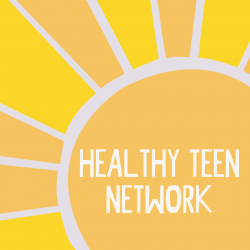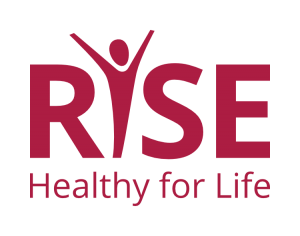What student behaviors do you find most challenging? What techniques can you use to respond to these behaviors? Explore essential classroom management techniques for the sex education classroom. Take a peek at a few different kinds of sex education classrooms, as well as number of challenging behaviors and some techniques to address them.
Training Hub
The Sex Education Collaborative Training Hub lists trainings for sex educators, facilitators, and other professionals on best practices for sharing important information with clients and the public. From teaching anatomy inclusively to effectively addressing bias in the classroom to addressing racial justice and equity in sex education, the Training Hub includes trainings, technical assistance, and policy support from state, regional, and national leaders in the field of sex education.
Please note: The Training Hub includes both in-person and online professional trainings. If you see a training you are interested in and it isn’t listed as virtual, please reach out directly to any of our members to find out what's possible!
Trainings Offered by State-Based and National Organizations
Displaying results 91 - 95 of 154Unlocking the Secrets of Classroom Management
- Indicator 1 (K-12): Demonstrate the ability to build rapport with students. (S)
- Indicator 2 (K-12): Demonstrate three student-centered instructional approaches that support a variety of learning styles. (S)
- Indicator 3 (K-12): Explain the differences between positive vs. shaming approaches to teaching sex education.
- Indicator 5 (K-12): Describe three effective strategies for practicing skills with students.
- Indicator 1 (K-12): Explain three reasons why it is important to respond to every question students ask when teaching sex education.
- Indicator 2 (K-12): Demonstrate the ability to effectively respond to three different types of challenging questions. (S)
Virtual PD - Increasing Personal Comfort When Teaching Sex Ed
Virtual Professional Development is a simulated classroom where teachers can practice teaching student avatars using short scenarios and support from an instructional coach, so they can quickly learn and master the skills they most need to be effective. With upper elementary, middle and high school classrooms, Virtual PD has scenarios for teachers of all grade levels across a wide range of topics aligned with the Professional Learning Standards for Sex Education (PLSSE). You can watch the video here to learn more about Virtual PD.
Using the Virtual Professional Development simulated classroom, the educator will practice Increasing Personal Comfort When Teaching Sex Ed with the student avatars. In this VPD scenario, the participant will conduct an activity about the physical changes of puberty with an established classroom community. In this simulation with the five students, the educator will ask students to engage in a think-pair-share activity to brainstorm three physical changes of puberty and then have both small groups report back. The participant will need to demonstrate personal comfort when leading this discussion with students.
- Indicator 1 (K-12): Demonstrate the ability to build rapport with students. (S)
Strategies to Foster Youth Resiliency
Studies of adverse childhood experiences confirm what many of us know from working with young people—children raised in adverse environments are more likely to experience negative developmental outcomes, including teen pregnancy. However, many young people thrive despite the odds. What makes these young people resilient, and what can youth-serving professionals do to help foster resiliency through sexual and reproductive health programs? This workshop is dedicated to answering these important questions. Participants will review current trends in resiliency research, including the connection between resiliency and positive youth development, and examine personal attitudes around what it means to be resilient across different cultural contexts. They explore factors that make young people resilient and develop new strategies for fostering resiliency among youth, including using strengths-based facilitation and implementing support structures.
Objectives:
- Describe how positive youth development can improve youth outcomes.
- Examine personal attitudes about what it means for a young person to be resilient.
- Identify individual qualities associated with resiliency in youth.
- Identify individual educator strategies and agency-level support structures that build resiliency in diverse groups of youth.
- Implement an action plan for developing strengths and improving support structures in existing youth programs.
Visit ETR's Training & TA Form to submit your request and receive cost information.
- Indicator 4 (K-12): Describe three effective response strategies when a student or school community member has been hurt or wronged by bias.
- Indicator 5 (K-12): Describe three strategies educators can use to acknowledge and proactively work to mitigate the impact of bias on their students’ sexual health and multiple, intersecting identities.
- Indicator 2 (K-12): Describe how verbal and nonverbal expression of personal values, and comfort with topics related to sex education, could impact one’s teaching
Virtual PD - Using Medically Accurate Terms When Teaching Sex Education
Virtual Professional Development is a simulated classroom where teachers can practice teaching student avatars using short scenarios and support from an instructional coach, so they can quickly learn and master the skills they most need to be effective. With upper elementary, middle and high school classrooms, Virtual PD has scenarios for teachers of all grade levels across a wide range of topics aligned with the Professional Learning Standards for Sex Education (PLSSE). You can watch the video here (link is external) to learn more about Virtual PD.
Using the Virtual Professional Development classroom simulator, the educator will practice Using Medically Accurate Terms When Teaching Sex Education with the student avatars. In this scenario, the educator will soon be starting a unit on puberty with their students. One of the points they want to stress with their students is the importance of using medically accurate names for body parts, including reproductive anatomy and external genitalia. In this simulation with five students, the participant will need to demonstrate the ability to use medically accurate terms and explain the benefits of teaching these to students.
- Indicator 2 (K-12): Demonstrate the ability to use medically accurate terms for sexual and reproductive anatomy, including all external genitals. (S)
Puberty and Adolescent Development: Growing Pains and Gains
Puberty and Adolescent Development: Growing Pains and Gains will increase middle and high school health professionals’ knowledge of the changes commonly associated with puberty and go beyond the basics for a more complete picture of adolescence. At the end of this workshop, participants will feel equipped to speak with students about some of the more challenging aspects of adolescence, like developing healthy self-concept, addressing negative influences, and making more independent decisions.
Format/platform:
- Online Learning Management System (Canvas e-learning), hosted by Rutgers University
- Six-hours of total contact time utilizing videos, podcasts, instructional games, discussion boards, written assignments, presentations, readings, and visual animations
- Asynchronous
- Instructor-led
All content is aligned to the National Sexuality Education Standards, the National Teacher Preparation Standards for Sexuality Education, the Professional Learning Standards for Sex Education, and the Areas of Responsibility and Competencies for Health Education Specialists.
- Indicator 2 (K-12): Demonstrate three student-centered instructional approaches that support a variety of learning styles. (S)
- Indicator 1 (K-12): Describe how puberty prepares the human body for the potential to reproduce.
- Indicator 2 (K-12): List three physical, three social, and three emotional changes that occur during puberty.
- Indicator 2 (K-12): Demonstrate the ability to effectively respond to three different types of challenging questions. (S)
Additional Trainings offered by out-of-state organizations
- ‹ previous
- 2 of 49
- next ›
RISE provides facilitator training and support for sexual health educators, including workshops, consulting, and answering question-box questions.




